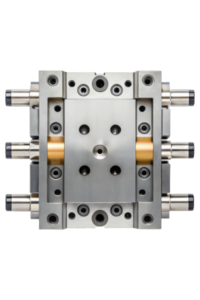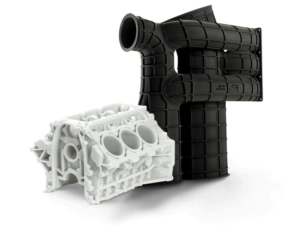Most plastic items you see around you are made via injection molding, no matter where you turn. Plastic injection molding has been a dependable, well-respected production technique for over a century. John W. Hyatt invented the first injection-molded component in 1872, and the industry has developed significantly since then.
Its cost efficiency and design adaptability enable various use cases across several sectors. Here are some considerations you should be aware of before evaluating whether this manufacturing technique is appropriate for your project.
Information to Consider Before Getting Plastic Injection Molding
Here are some factors you should be aware of some factors before considering if this manufacturing method is appropriate for your project.
Procedure for injection molding
Making a tool, sometimes called a mold, by carefully milling it from steel or aluminum is the first step in the injection molding process. Instruments are inserted into injection molding equipment by a machine operator. Through a hopper, thermoplastic resin pellets are supplied to the injection molding machine.
These thermoplastic pellets are advanced into the machine’s barrel by a screw when the injection molding machine is turned on, where they are melted until they become liquefiable. At the front of the barrel, in a chamber, this liquid resin is collected and is known as a shot.
The device inserts a shot of thermoplastic resin into the tool cavity. As soon as resin starts to fill the tool, the device adds pressure. The resin hardens once it has cooled, creating the component.
The part finally exits the machine and advances to the following manufacturing stage. This procedure is simple to repeat for manufacturing runs, including between a few hundred and millions of components.
Pricing for injection molding
The majority of the expenditures associated with injection molding are related to tooling. The success of a manufacturing run depends heavily on the quality of the tooling, which makes or breaks the plastic injection molding process. Part complexity, the length of the manufacturing cycle, and the kind of thermoplastic resin all affect tooling costs.
The cargo, or the force required to hold the mold closed, is used to rate the size of the injection molding machines, which are directly correlated with the item’s size. The intricacy of the item can affect how long a molding cycle takes.
Plastic injection molding advantages
Due to the high expense of multi-step production procedures, plastic injection molding is a significant cost-saving strategy. Since the production cycle is brief, the components can be ready to proceed to the following processes quickly. Plastic injection molding is one of the most economical and practical production options for generating huge component volumes since the molding process may be repeated thousands of times.
Category of Mold
Implementing the molding rules will be a crucial determining effect on the cost of the mold itself, depending on the specifics of your project. The quantity of pieces you plan to create is a crucial factor when choosing the mold. The volume of the instrument determines its durability.
Type of Resin
There are tens of thousands of plastic resins available; picking the best depends on your products. The function of individual parts and the final result must be considered. Are they for abrasion resistance? Do they require molded-in bosses for sonic welding or inserts to join pieces? These factors are essential when deciding which resin is appropriate.
Time to construct the mold
There is no specific deadline for constructing the mold. The framework will depend on your outlined needs, budget, and the staff at your disposal. Expect to haggle over a more excellent price if you require the mold more quickly. As they say, time is money.
Additional Services
A component of the project involves injection molding. You could require additional services to have a top-notch product built, packaged, and delivered to your clients. A tool plant manufactures tools, but what if your product requires assembly, further processing, quality testing, and inspection? An essential factor to consider is having a one-stop shop that will relieve you of the burden of a new project. For the entirety of your project, pick the appropriate production facility.
Organizing the Project
A project’s precise timetable must be able to be managed properly and efficiently. A well-functioning machine will have a readily readable visual timetable that shows what is on track, what is behind schedule, and what has to be done before the project is finished. There are other methods of managing the schedule besides using a Gantt chart. The organization of a high-quality tool manufacturing plant should be rigorous.
ISO Accreditation
The tool shop may not be the greatest just because it has a current ISO certification, but it indicates that they have a quality-oriented attitude. The ISO accreditation is evidence that they are committed to producing high-quality goods and will adhere to their standards to guarantee this outcome. Use a tooling facility that has ISO certification, as this directly connects to their chances of producing a high-quality product.
Conclusion
There are specific criteria for design features if you wish to use plastic injection molding. We advise working with a product development firm that has extensive experience with plastic injection molding. Initially, partnering will apply that expertise to the creation of your product. Please contact us if you need assistance or have questions about plastic injection molding and would appreciate some professional guidance.
A fantastic method for final mass-produced goods is plastic injection molding. Additionally, it is helpful for finished prototypes that are put to use in customer and/or product testing. However, for objects in the early phases of design, 3D printing is far more versatile and economical than at this late point in manufacturing.
Frequently Asked Question
Question 1. Injection molding: what is it?
Answer: The liquid material is injected into a mold to create the pieces using the injection molding technique. Thermoplastic polymers are the most popular material for doing it, although they may also be utilized with glass and metals.
Question 2. What substitutes exist for injection molding?
Answer: Additional to injection molding, several other methods are accessible for manufacture. A few to think about are as follows:
- 3D printing has become more affordable for smaller consumers because of technological advancements.
- Spin casting
Question 3. What is the purpose of injection molding?
Answer:
- The manufacture of highly complex pieces is possible using injection molding. You’ll need an engineering design company or an internal division to create believable designs.
- To create desired qualities in your finished product, you can combine several materials and employ various materials in injection molding.
- Since injection molding may be entirely automated, it allows for highly rapid production.
Question 4. What have recent developments there been in injection molding?
Answer: As technology progresses, the trend in injection molding also does. Here are some new, fascinating things:
- Micro-molding (very accurate and very tiny component manufacture)
- RFID tag advancements used in component manufacture
- Tool for Printed Injection Molds (PIMT)
About the Client
For many years, Quickparts has been at the forefront of the technology in additive manufacturing. Discover additional information about who they are and how their expertise enables the world to accurately and swiftly produce high-quality components.


